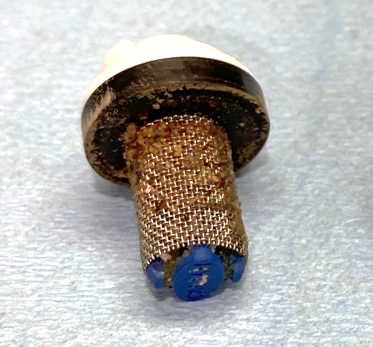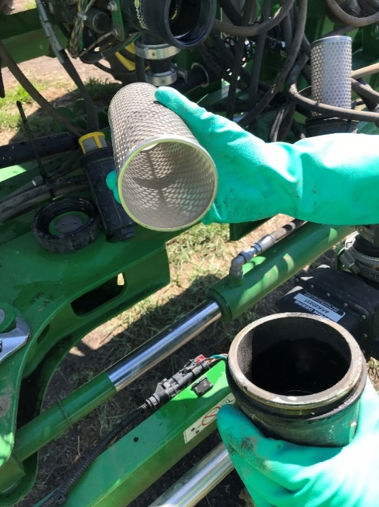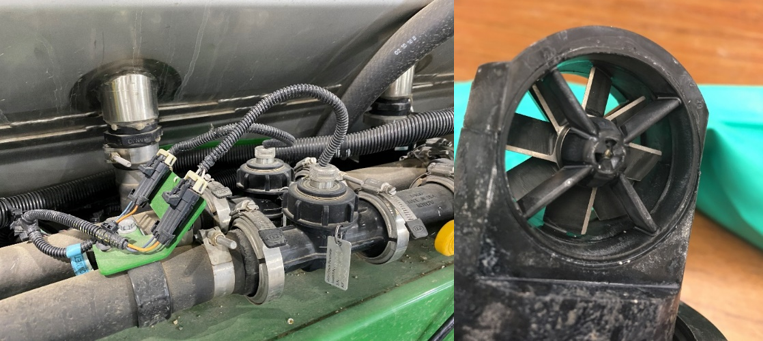By Ryan Bergman, Iowa State University Extension Program Coordinator in Ag Technology
Prior to spring field operations, ensuring your equipment is ready can save valuable time and reduce stress when windows get tight due to weather conditions. The sprayer is a critical piece of equipment in most crop production operations. Ensuring your sprayer is mechanically sound, clean, and properly setup will help ensure quality and timely applications of spring fertilizer and pesticides.
Nozzle Selection and Setup
The spray nozzles are a critical piece of quality spray applications. Take time to look at the products you plan to apply in 2020 and evaluate if the nozzles you already have will work well with those products at the speeds and pressure you plan to operate in. Some chemicals like dicamba and 2,4-D products have strict nozzle requirements whereas other products like glyphosate allow more choices. For example, there are only four types of TeeJet nozzles approved for use with Enlist Duo herbicide (nozzle specifications on page three). When applying multiple products, refer to the label with the most strict nozzle requirements to select your nozzle for that application. If you operate at a wide range of speeds and pressures during the season you may want to evaluate the benefits of a PWM (pulse-width modulated) spray system to provide a broader range of nozzle flow rates while managing droplet size more consistently.

Figure 1. Nozzle strainers will often build up debris as a result of dirty carrier solution or chemical build-up. If left clogged this will restrict solution flow through this nozzle and impact the application rate for this nozzle.
Running the sprayer with water to evaluate nozzle performance before the season starts is a best practice. Ensure this is done in a safe manner with proper personal protective equipment. This allows you to check the flow through each nozzle. While this can be time consuming, it helps you identify worn, plugged, or damaged nozzles. Using a tool like a Spot-On Calibrator can make this process quicker and simpler.
Nozzles with debris build up can cause significant deviations in flow between nozzles on a common rail boom setup (Figure 1). The debris will cause the affected nozzle to experience a different pressure than non-plugged nozzles on another area of the boom and create rate variation across the boom. This illustrates the importance of recognizing the quality of water you are spraying and taking appropriate measures to protect your system from debris. This might include additional strainers on the loading lines of the machine and cleaning nozzles more frequently. It’s also good to examine nozzle alignment during this process. Nozzle holders or mounts can bend or move (especially if booms frequently hit the ground or other obstructions). Proper alignment ensures the optimum spray pattern is maintained by your machine.
Solution Plumbing
It’s always recommended that the machine’s plumbing is cleaned regularly to avoid chemical build up and potential cross contamination. Double check these areas prior to heading to the field in 2020.

Figure 2. Frequently inspecting and cleaning the main solution strainer will reduce pressure drop in the system, improve the consistency of the spray application rate, improve the life of spray system pumps, and reduce the risk of contamination when switching products.
- Strainers are crucial to ensuring particulate doesn’t get into the solution system or nozzles. Regular cleaning of all strainers on the machine is always recommended. Some machines have multiple strainers on the chassis or boom. (Figure 2)
- Inspect the machine plumbing for hoses that are not properly secured, sagging, or have excess wear. Sagging or kinked hoses can impede solution flow and cause chemicals to become trapped in these areas. Replace worn hoses and tie up loose hoses.
- Remove and check the end caps on solution tubes for buildup and clean if needed.
- Depending on the type of flowmeter your system uses, remove the insert and ensure it’s clean and can move freely. (Figure 3)
- Have the flowmeter on your machine re-calibrated. Your local equipment dealer or rate control supplier can assist you with this process.
- The fencerow nozzles are typically the first to be broken on a machine due to their placement. If equipped on your machine, make sure the nozzles and plumbing are in good working order and the system is functional if you intend to use it.
- Check around fittings for any chemical residue or evidence of leaks.
- Inspect the foam marking systems if equipped. While many operators don’t use these today, they can come in handy if your machine experiences GPS problems.

Figure 3. Routine cleaning of the sprayer flow meter will ensure accurate application rates and reduce the calibration requirements for the solution system.
General Machine Maintenance
It’s important to make sure your sprayer is mechanically sound. Consult your owner’s manual for checklists and specifications to evaluate during this process. Make sure greasable parts and joints are properly lubricated, machine fluids are at the proper level, filters are clean and in good condition, and tire mounting nuts are properly torqued and in good condition. Many boom suspension components require frequent lubrication to ensure adequate movement and can have an impact on boom height control performance. Sprayer tires also are important to evaluate and check. Due to the high speeds and axle loads experienced by sprayer tires, they need to be in good operating condition and properly inflated.
Taking time to inspect and maintain your sprayer now is one step to preparing for a smooth spring.





